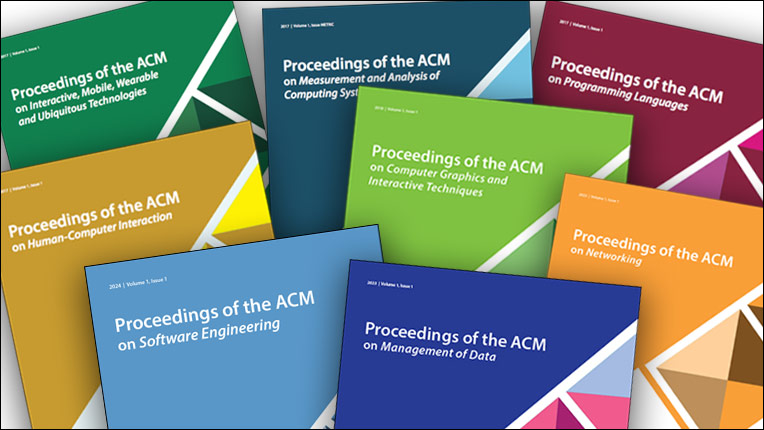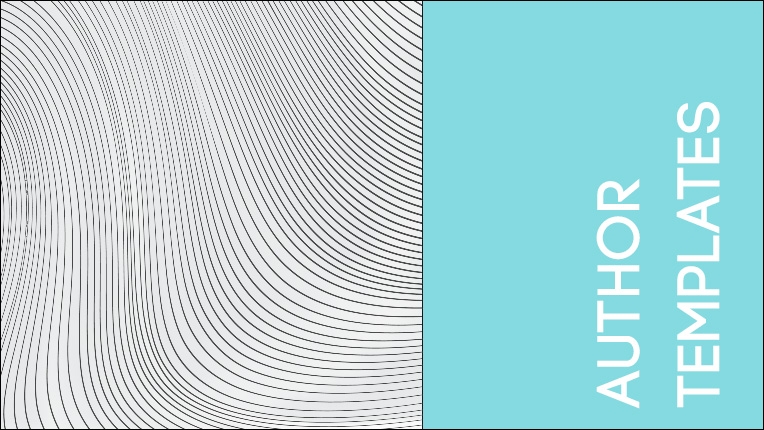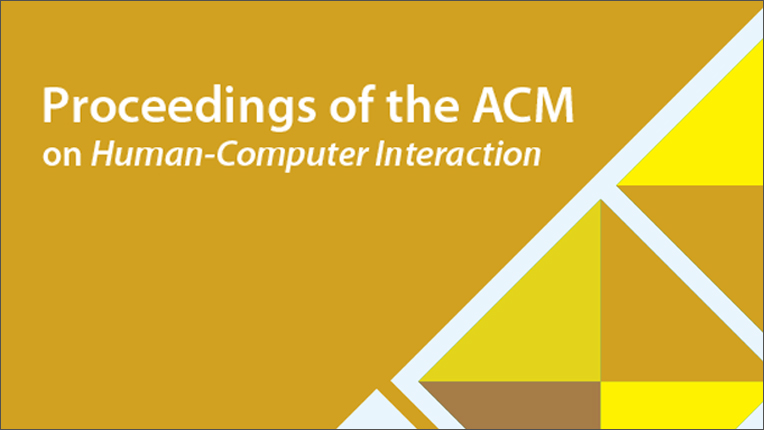PACM Guidelines
Criteria
The PACM series will adhere to the following principles:
- Clear documentation of review process and policy
- Minimum of three expert reviewers with written reviews
- Reviewers may be drawn from outside the conference Program Committee
- Minimum of two-cycle review with opportunity for major revisions reviewed by same reviewers
- Specific provisions for conflict-of-interest
It is recommended that attendance at the event not be mandatory for publication.
Basic Assumptions
- The default medium for PACM journals will be online-only. Physical distribution media can be produced at additional cost per issue with pricing based on media, quantity and size of issues.
- There will be no professional copy editing. ACM has partnered with International Science Editing (ISE) to provide language editing services to ACM authors. ISE offers a comprehensive range of services for authors including standard and premium English language editing, as well as illustration and translation services, and also has significant outreach in China. Editing is available for both Word and LaTeX files. As an ACM author, you will receive a generous discount on ISE editing services. To take advantage of this partnership, visit http://acm.internationalscienceediting.com/. (Editing services are at author expense and do not guarantee publication of a manuscript.)
- There will be no professional typesetting. Authors must use the template selected by the title, either the ACM large or the ACM small option within the Consolidated ACM TeX or Word template available at https://www.acm.org/publications/authors/submissions.
- ACM’s standard journal submission system will not be used by PACM because it would require significant cost for configuration and development time to fit the standard PACM model and add new ongoing administrative costs.
- Production costs charged to the SIGs for these journals will be in line with previous article production costs. In the first year, ACM will absorb any difference in actual costs. Subsequently, direct costs will be adjusted to reflect actual experience.
1. Submission Systems
PACM editors may choose whatever submission system they are most comfortable with. At a minimum, the submission system chosen needs to support at least two rounds of review and revision and maintain reviewer assignments through to decision. Editors will be responsible for selection of articles for each issue in a volume and informing ACM HQ journal staff of the issue line-up. Ideally, the submission system will provide editors with configuration support for issue designation and assignment of accepted articles to specific issues.
ACM recommends use of one of the following submission systems because they are being integrated with ACM e-Rights and production systems to minimize need for duplicate metadata capture and enable efficiency in flow to final production and publication:
- HotCRP
- EasyChair
- PCS
If you are planning to use a different system, please send your point of contact at the submission system to Sara Kate Heukerott, ACM Associate Director of Publications, so ACM HQ can arrange integration with our e-Rights Management System (if possible).
2. E-Rights System
The Editor-in-Chief or designated Guest Editor of a specific issue (see Item 6 below) is responsible for submitting a CSV file including all authors (one identified as the contact author), all email addresses and affiliations, and the titles for each article accepted in an issue. A sample file with the details and delimiters of what must be supplied will be provided. This file should be sent to Anna Lacson 7 weeks prior to the scheduled publication date for the issue. This allows authors 4 weeks to complete their ACM e-Rights form (in which authors determine how they wish to manage the rights of their article, including the selection of OA). (See Item 11 below and the note for the scheduled delivery of PDFs.)
3. ISSN
ACM will file for ISSNs for each PACM title, will register them with the Library of Congress, and will distribute them as soon as acquired. The PACM proposal needs to include the expected periodicity for the title (even if it may change in the future).
4. Pricing
PACM titles will have individual e-only subscription prices and will also be included in all subscription licenses to the ACM DL as a whole.
5. Journal Home Pages and Indexing by Clarivate (formerly ISI)
Each PACM title will have its own Journal Home Page in the Digital Library. The editor responsible for a PACM journal must choose a volunteer Information Director to work with HQ staff in configuring the Home Page and in maintaining it thereafter. Information Directors are listed on the journal home pages and mastheads of each issue. Haritini Kanthou will work with the Information Directors initially and Sara Kate Heukerott and Stacey Schick will work with them subsequently. In preparation for the setting up the Home Pages, Sara Kate will contact you for critical information. For an example of the standard ACM Journal Home Page, see: http://imwut.acm.org/.
Important: It is essential that neither PACM Journal Home Pages nor editorials within the published issues make any mention of their related conferences or proceedings to ensure they are indexed as journals in order to qualify for an Impact Factor. Clarivate (formerly ISI) has written to ACM explicitly about the PACM program:
"If it is your intention to create a “journal,” then there should NOT be any reference to a conference held anywhere—not on the journal website, individual articles, in the HTML or the PDFs, in notes, etc. Just peer-reviewed articles or reviews—just like any other ACM journal currently indexed in Web of Science. If the publication contains any association to a conference which was previously held or to be held, in any place in the journal or the journal’s website—our editors might consider the “journal” to be a candidate for the Conference Proceedings Citation Index.”
* Note that Clarivate has agreed, if desired, to allow issues to be named with character strings rather than enumerated; the string may be up to six characters in length. Thus, naming convention can be Vol. 1/Iss. OOPSLA listed or Vol. 1/Iss. POPL, etc.
6. Editorial Structure
In light of Clarivate's statement in Point 5 above, it is important that each PACM title have a recognizable journal editorial structure rather than a Program Committee listing. There may be an Advisory Board and an Editorial Board with Associate Editors and Senior Associate Editors. Please look at the defined journal editorial roles found here: http://www.acm.org/publications/policies/position-descriptions
The Editor-in-Chief role of an ACM journal has several distinguishing features:
- Ultimate responsibility for the journal’s contents,
- Authority to appoint and dismiss members of the Editorial Board at will,
- A service term of three years, renewable once, and
- Appointment by the ACM Publications Board.
- Even if your PACM journal editor does not meet all these features, we are proposing the following structure: One Editor-in-Chief for each title with Guest Editors for each issue if you have issues where papers may be presented at different events. The Executive Editor of the PACM series as a whole will be the Chair of the PACM Steering Committee.
Each Editor-in-Chief will serve a term of 3 years renewable once.
It is expected that the sponsoring SIG(s) for each title will form a Search Committee for the editor of the title. Your nominee for Editor-in-Chief should be recommended to the Chair of PACM Steering Committee Philip Wadler with a CV and short report of the search process. The Publications Board has final approval and will issue the official Letter of Appointment to the Editor-in-Chief of each journal.
7. Promotion
ACM will promote each PACM title individually. Bruce Shriver will work with you and Sara Kate Heukerott to produce promotional material and determine the best venues for exposure to attract authors and readers.
8. Access
The members of the SIGs which sponsor the events associated with a given PACM title will have complimentary access to the journal in the ACM DL.
The OpenToC and OpenSurround Services may need tweaking since journal issues are being published independent of an event.
9. Ancillary Material
The production of other ancillary material associated with a given PACM issue will initially be handled separately from the production of the PACM issue. Over time, with proper configuration of submission systems and integration with ACM systems and the Digital Library, the data for such ancillary material might be at least partially auto-generated during the production of a PACM issue.
10. TMRFs
The same application process will take place for your events. However, you will need to indicate whether there will be a journal publication and/or a proceedings publication. The TMRF forms are being modified to accommodate the existence of a PACM title in addition to, or instead of, a Proceedings.
11. Vendors
The Editor-in-Chief or the Guest Editor of an issue is responsible for selecting the set of articles for each issue and indicating a particular sequence if desired. In addition, articles may be grouped in sections and if so, the Section Title must be supplied. Editors may choose to work with vendors of their choice for final production of issues. However, ACM must approve these vendors and have specific contacts to work with to ensure that PACM specifications are met. If you have a selected vendor, the line-up for each issue must be supplied to Sara Kate Heukerott with accepted PDFs at ACM HQ at least three weeks** prior to scheduled publication date for the issue. Once these line-ups are sent for final production, article sequencing cannot be changed.
**NB: This production schedule depends on authors using the ACM PACM template without manipulating page layout specifications. Otherwise, production of their articles could be delayed until the next issue or another two weeks should be built into your delivery schedule.
12. Covers, Mastheads, and Tables of Contents
ACM will supply the cover image for each issue published in the DL along with the inside covers including masthead and journal information. You will need to supply Sara Kate Heukerott with the editorial structure and all the names and positions that belong on the masthead. The ACM vendor (or the vendors you choose who will work with ACM HQ) will be responsible for generating the Tables of Contents from the issue line-ups provided by the Editor. See the Production Instructions for detailed production information.
13. Digital Library Displays
Previous proceedings series that have transitioned to PACM journals may have a listing in the DL for the event that will point to the journal issue or issues whose articles are presented at the event.
PACM Governance
The PACM Steering Committee is charged with PACM oversight and operation. However, each PACM journal will have an Editorial Board structured according to its own proposed and approved governance system. The ACM Publications Board has ultimate authority over the PACM Series and each of its titles.
Proceedings of the ACM Series
Proceedings of the ACM (PACM) is a journal series that launched in 2017. The series was created in recognition of the fact that conference-centric publishing disadvantages the CS community with respect to other scientific disciplines when competing with researchers from other disciplines for top science awards and career progression, and the fact that top ACM conferences have demonstrated high quality and high impact on the field. See PACMs on Programming Languages, Interactive, Mobile, Wearable and Ubiquitous Technologies, Measurement and Analysis of Computing Systems, and HCI.

How to Apply
If your conference has an established record of high quality, judged by standing in the field, citations, and other measures used by the PACM Steering Committee, you may consider applying for inclusion in the PACM journal series. The application guidelines serve as a template for what to include in a PACM proposal. The Steering Committee will review the proposal, work with the proposers on potential revisions, and then decide whether to forward a proposal to the ACM Publications Board for final approval.

Production Instructions
Once a proposal has been approved, your production team will need to be assembled. Detailed instructions for PACM production vendors are found in the PACM production guidelines and required metadata documents. ACM templates must be used by authors to ensure a uniform look to the journals program.
New Authoring Templates for ACM Publications
ACM has transitioned to new authoring templates. The new template consolidates all eight individual ACM journal and proceedings templates. The templates are updated to the latest software versions, have been developed to enable accessibility features, and use a new font set.

PACM on Human-Computer Interaction
Proceedings of the ACM on Human-Computer Interaction (PACM HCI) is a journal for research relevant to multiple aspects of the intersection between human factors and computing systems. PACMHCI covers a broad range of topics and methods that help illuminate the intersection between humans and computing systems. The scope of this journal includes research contributions in new systems for input and output, studies of user experiences with computing systems, scholarship on the individual and group effects of computer mediation, and societal impacts of new human computer interactions.

PACM Series on Measurement and Analysis of Computing Systems
The PACM Series on Measurement and Analysis of Computing Systems (POMACS) publishes original research of the highest quality dealing with performance of computing systems, broadly construed. We recognize that critical insights into key design trade-offs in computer or network systems have historically be obtained using a broad set of tools: benchmarking and experimental evaluation, mathematical modeling, algorithmic analysis, which often need to be combined creatively.
